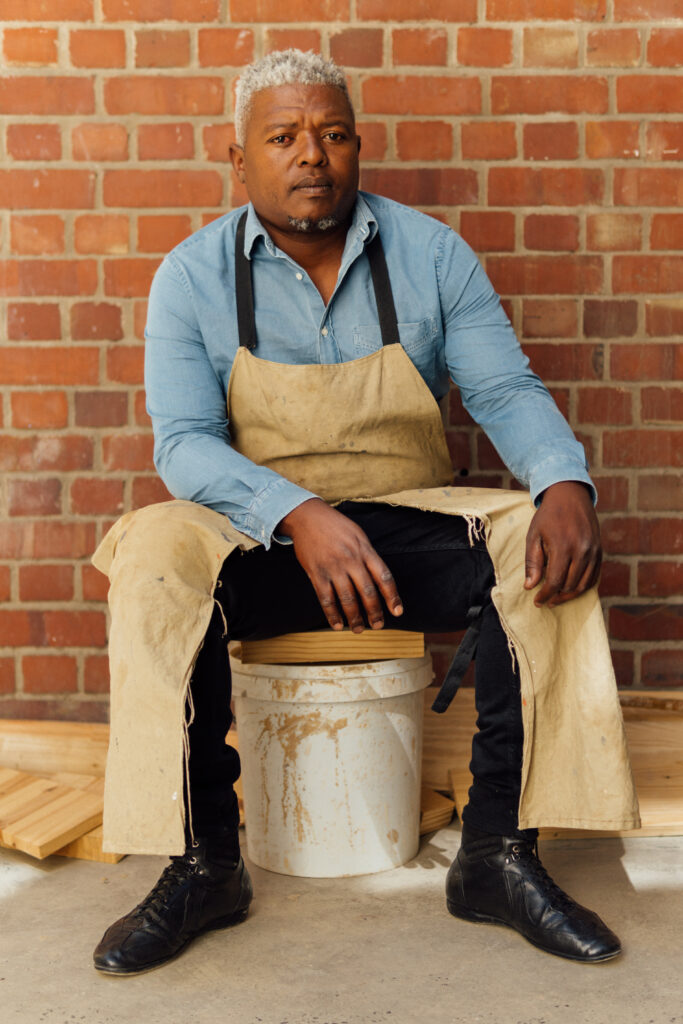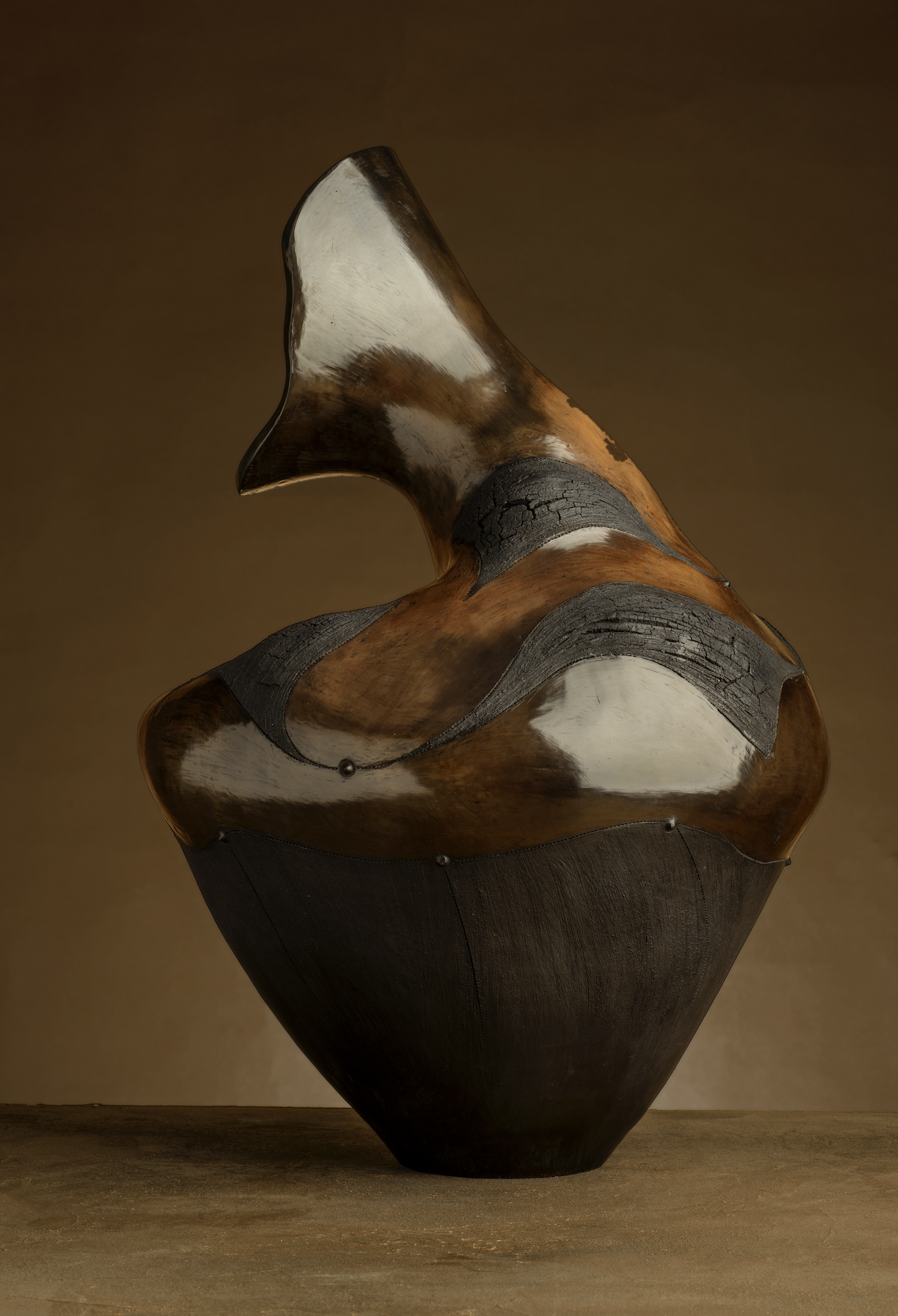biography
siyabonga
fani
b. 1981
two skins
fig. siyabonga fani, sisi wendaw (2023)

Siyabonga Fani works in Woodstock, Cape Town. He has been working with clay since the late 1990s and founded his studio, Siyabonga Ceramics, in 2013, while a student at Sivuyile College (now the College of Cape Town). Fani’s work is, in part, a requiem for his father, the self-taught artist who would draw sketches of television characters and perpetually redecorate their home. Since his father’s death, Fani’s clay is heavier; it bears the smell of smoke, pit-fired in the alleyway outside the studio. Fani hand-coils his pieces, working intuitively, drawing forms from the bodies of trees, the rivers and the human beings who make lives from the earth. His work is animated by the joy and estrangement of the township imaginary. In it, there is the yearning for the pastoral mirage of the rural homeland and the desire to hold the land tenderly. And, with the same impulse, there is the nostalgia for the bustle and hum and dialects of the township. The resulting works are polar-charged, multilingual, multi-milieu, at once loving and longing. Fani’s works can be found in private and public collections, both in South Africa and the United States.
siyabonga fani
b. 1981 (cape town, western cape)
two skins
With a thumb against the clay’s underside, Siyabonga Fani depresses the landscape, and streams of fissures chase his touch. The clay has been aged with a drying agent, and so the material resists the movement, breaking apart so as to bend. This wet body will be offered up to a fire made from yesterday’s newspaper and litter, emerging, wearing a mottled coat of smoke. After this body has been bruised by flame, burnished by stone, and varnished by cooking oil or shoe polish, the effect is one of a creature wearing two skins. She is a selkie casting off one body for the next – the polished, metallic pelt for the scorched, blackened flesh of a tree.
The objects made under Fani’s hands are in between things. By his account, they are partial ancestral vestiges, expressions of cultural heritage, tributes to his artistic father, a gesture to the great lineage muffled in the breath of imphepho, a solemn rite. These clayworks are recollections of a part-inhabited, part-imagined homeland. The landscapes that Fani recalls in his bands of charred clay are the drought-parched rivers of the Eastern Cape, the cracked earth revealed beneath. However, twisting this image of pastoral Xhosa identity is the second skin: the muffled coat of the city, the township. Here is the static fuzz of the urban, the smog, the smoke, the music thrumming against tin, the hiss of the highway. This skin bears the texture of gelatinous heat, the mirage in the dust. It is the colour of the view from the train, in and out of the city centre, early in the morning, at the swell of the evening. Fani knits these landscapes together, like textiles, for these stories are not distinct. They are imagined in contradistinction; they are co-created. These works remember the quotidian exiles of the South African state – the train line from the city to the outskirts, the train line from farmland to the mines and back again, the orange eyes of the Intercape through the Huguenot tunnel, huffing like a monster, wheezing and coughing like the sick. In the burn of Fani’s clay, perhaps there lies a pair of lungs, straining in the dust, like the lungs of so many returning from the pit.
“The landscapes that Fani recalls in his bands of charred clay are the drought-parched rivers of the Eastern Cape, the cracked earth revealed beneath. However, twisting this image of pastoral Xhosa identity is the second skin: the muffled coat of the city, the township.”

fig. Siyabonga Fani in his Woodstock studio (2023)
read more with our publication
Clay Formes
contemporary clay from south africa
CLAY FORMES is the first of its kind: a survey of contemporary clay from South Africa. This volume, through exquisite photography and literary essays, showcases multiple generations of living South African artists, each innovating the potentialities of clay and ceramics. This publication offers enthusiasts and collectors a glimpse into the studios of thirty important South African artists and opens a window into the complexity of each body of work, revealing the richness of both contemporary clay and ceramic tradition within South African art.

This publication has sought to reflect its subject: to be as fluid as water and as weighty as earth. All this is done in the hopes of leaving behind a fresh approach to this manifold medium, and of presenting to the world the previously unexplored richness of sculptural clay in South Africa.

